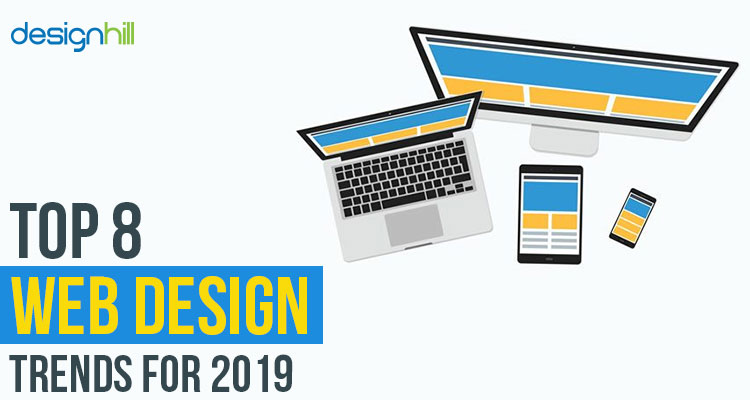Interested In Learning Just How Site Layout Has Changed Throughout The Years? Explore The Trip
Interested In Learning Just How Site Layout Has Changed Throughout The Years? Explore The Trip
Blog Article
Web Content Author-Bradshaw Bojesen
In the past, sites were simple and concentrated on information. Navigation was direct, and style was for desktops. Currently, customer experience is crucial. Information guides styles for simple navigating. Receptive designs suit different gadgets. Today, dark setting lowers pressure, and minimal menus improve navigation. Interactive functions involve users, and strong visuals attract attention. AI integration improves interaction. See just how style has developed to enhance your on-line journey.
Early Days of Web Design
In the early days of web design, simpleness preponderated. Web sites were standard, with minimal shades, typefaces, and formats. The focus got on supplying information instead of flashy visuals. Individuals accessed the net through sluggish dial-up connections, so rate and capability were key.
Navigation food selections were straightforward, generally situated at the top or side of the page. Websites were created for computer, as mobile surfing wasn't yet common. Content was king, and designers prioritized easy readability over intricate style elements.
HTML was the main coding language utilized, and developers needed to work within its constraints. Computer animations and interactive attributes were marginal compared to today's requirements. Web sites were fixed, with little dynamic material or individualized user experiences.
Rise of User-Focused Layout
With the advancement of website style, a change towards user-focused design concepts has actually become increasingly prominent. Today, producing websites that focus on individual experience is vital for engaging visitors and achieving service objectives. User-focused design involves recognizing the demands, preferences, and actions of your target market to customize the website's format, material, and features as necessary.
Designers now carry out extensive research, such as user surveys and use testing, to collect understandings and comments straight from users. https://www.google.com/maps/place/Moon+and+Owl+Marketing/@32.9757271,-106.5344695,1840583m/data=!3m1!1e3!4m6!3m5!1s0x864ddeaa4179705b:0x488d41d2cc6b9750!8m2!3d32.9757271!4d-97.5696258!16s%2Fg%2F11b6mpccrg?entry=ttu&g_ep=EgoyMDI1MDIxMS4wIKXMDSoJLDEwMjExNDUzSAFQAw%3D%3D -driven technique helps in creating user-friendly navigating, clear calls-to-action, and visually appealing user interfaces that reverberate with visitors. By putting the individual at the facility of the layout process, web sites can provide a more customized and enjoyable experience.
Responsive layout has additionally become a crucial facet of user-focused layout, making certain that internet sites are enhanced for various gadgets and display dimensions. This adaptability improves accessibility and usability, satisfying the varied methods users communicate with sites today. In essence, the surge of user-focused layout symbolizes a shift in the direction of producing electronic experiences that prioritize the demands and assumptions of the end individual.
Modern Trends in Web Design
Explore the most up to date patterns forming web design today. One famous fad is dark mode design, using a sleek and modern-day appearance while minimizing eye stress in low-light atmospheres. An additional crucial pattern is minimal navigating, simplifying menus and enhancing customer experience by concentrating on essential elements. Integrating micro-interactions, such as computer animated buttons or scrolling results, can create a more appealing and interactive site. Responsive style stays crucial, making sure smooth customer experiences across various devices. Additionally, utilizing bold typography and unbalanced layouts can add aesthetic passion and accentuate particular material.
Integrating AI technology, like chatbots for client support or individualized suggestions, improves individual engagement and improves processes. Accessibility has additionally end up being a considerable fad, with developers prioritizing inclusive layout techniques to cater to varied customer requirements. Experience by maximizing website performance for speed and performance is an additional emerging trend in website design. Collaborating with user comments and information analytics to repeat and enhance style constantly is essential for staying pertinent in the ever-evolving digital landscape. By accepting these contemporary trends, you can develop an aesthetically appealing, easy to use internet site that reverberates with your target market.
Conclusion
As you assess the evolution of site design from the very early days to now, you can see exactly how user-focused layout has become the driving pressure behind modern fads.
Embrace the trip of change and adaptation in web design, always maintaining the individual experience at the leading edge.
Remain existing with the most up to date fads and technologies, and never ever quit developing your technique to produce visually spectacular and easy to use sites.
Develop, adapt, and produce - the future of web design is in your hands.
